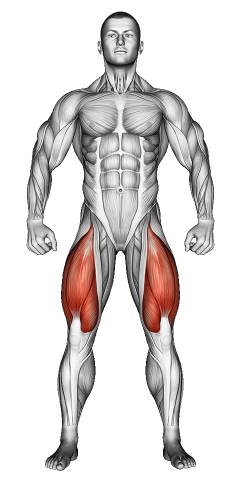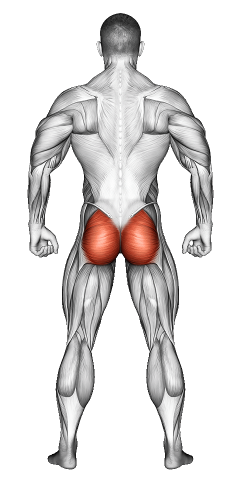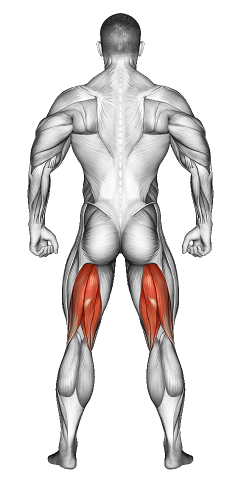Dumbbell Squat: Video Tutorial & Exercise Guide

Written By: Claude Michael
Updated: Oct 13, 2024
| Workout | Dumbbell Squat |
| Primary Muscle Group | Quads |
| Secondary Muscle Group | Glutes, Hamstrings |
| Equipment Required | Dumbbell |
| Force Type | Push |
| Mechanics | Isolation |
| Exercise Type | Strength |
| Difficulty | Intermediate |
Dumbbell Squat: Video Tutorial & Exercise Guide
- 1.Dumbbell Squat: Muscle Groups
- -1.1Primary Muscle Group
- -1.2Secondary Muscle Group
- 2.Dumbbell Squat: Step-by-Step Guide
- 3.Dumbbell Squat: Overview
- 4.Dumbbell Squat: Benefits
- 5.Dumbbell Squat: Pro Tips & Advanced Techniques
- 6.Dumbbell Squat: Progression Plan
- 7.Dumbbell Squat: Frequently Asked Questions (FAQs)
Secondary Muscles Group
Dumbbell Squat: Step-by-Step Guide
- Step 1: Stand with your feet shoulder-width apart, holding a dumbbell in each hand. Let the dumbbells hang at your sides with your palms facing in. Engage your core and keep your chest lifted.
- Step 2: Begin the movement by pushing your hips back and bending your knees, lowering your body into a squat. Keep your back flat and your weight in your heels.
- Step 3: Lower yourself until your thighs are parallel to the floor, or as low as you can go without compromising your form. Ensure your knees stay in line with your toes and don’t cave inward.
- Step 4: Push through your heels to return to the starting position, straightening your legs and squeezing your glutes at the top of the movement.
- Step 5: Repeat for the desired number of reps, maintaining control of the dumbbells and your posture throughout the set.
Dumbbell Squat: Overview
The dumbbell squat is a highly effective lower-body exercise that targets the quadriceps, hamstrings, glutes, and calves. By adding dumbbells to the traditional bodyweight squat, you increase resistance, leading to greater strength and muscle development.
This versatile exercise can be done anywhere, requiring only a pair of dumbbells, and is suitable for all fitness levels. The dumbbell squat is ideal for building leg strength, improving mobility, and enhancing core stability, as it engages your entire lower body and core.
Dumbbell Squat: Benefits
Dumbbell squats help build muscle strength and endurance in your quadriceps, hamstrings, and glutes. By strengthening these muscles, you can improve your performance in activities like running, jumping, and lifting, as well as enhance overall lower-body function.
This exercise also engages your core muscles, which are essential for maintaining balance and stability during the movement. As a compound movement, dumbbell squats burn more calories and help boost metabolism, making them a great addition to any fat-loss or strength-building program.
The added resistance from the dumbbells increases the intensity of the exercise, promoting muscle growth and improving functional strength that carries over into everyday activities like lifting and squatting.
Dumbbell Squat: Pro Tips & Advanced Techniques
Focus on driving through your heels to maximize glute engagement and maintain proper posture. Keep your chest lifted and avoid leaning forward as you squat. For an extra challenge, increase the weight of the dumbbells or try holding them at shoulder height in a front rack position. Ready to build strength and muscle? Let’s squat!
Dumbbell Squat: Progression Plan
Beginner
Intermediate
Advanced
Dumbbell Squat: Frequently Asked Questions (FAQs)
What muscles do Dumbbell Squats target?
+Dumbbell squats primarily target the quadriceps, hamstrings, and glutes, while also engaging the core muscles to help with stability during the movement.
Are Dumbbell Squats suitable for beginners?
+Yes, dumbbell squats are suitable for beginners. Start with lighter weights and focus on maintaining proper squat form. Gradually increase the weight as you become more comfortable with the movement.
How can I make Dumbbell Squats more challenging?
+To increase the difficulty, you can use heavier dumbbells, slow down the tempo of the squat, or hold the dumbbells at shoulder height in a front rack position. You can also incorporate squat variations like sumo squats for added variety.
How often should I include Dumbbell Squats in my routine?
+Include dumbbell squats 2-3 times per week as part of your leg day or full-body workout. They can be paired with other compound movements like lunges and deadlifts for a well-rounded lower-body routine.
What common mistakes should I avoid when doing Dumbbell Squats?
+Avoid letting your knees cave inward or rounding your back during the squat. Keep your chest up, core engaged, and knees aligned with your toes throughout the movement for proper form and maximum benefit.
Share
Don’t Wish for It, Work for It – Join the FlexXP Newsletter Today!
Thank you for signing up for the FlexXP Newsletter!
This site is protected and the Google Privacy Policy and Terms of Service apply.


